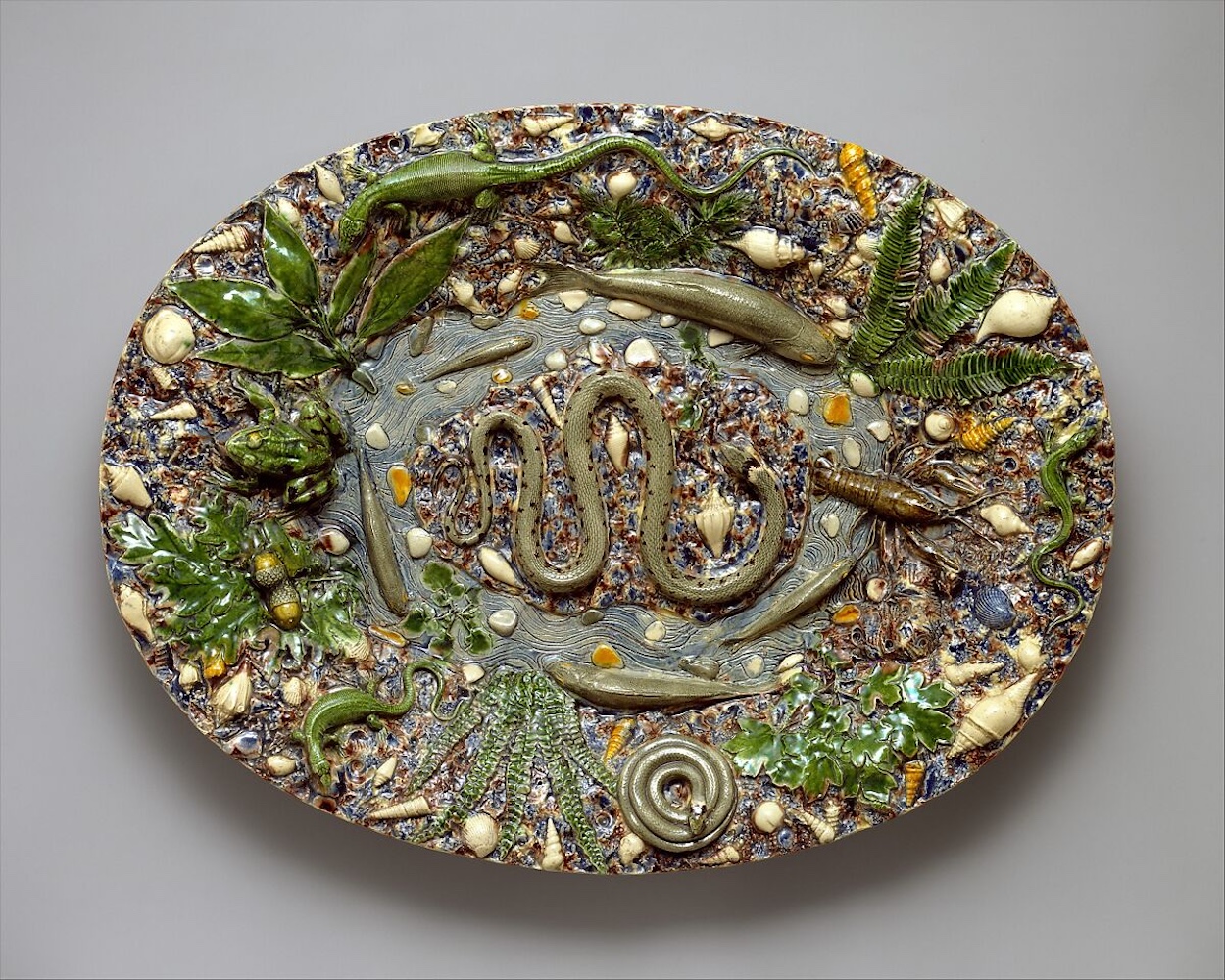Saltburn is many things—a laceration of polite society’s insidious inner workings, a deeply unsettling tale of sociopathic longing, and a wicked psych thriller about fucking one’s way up to the top and reveling in the post-coital bloodshed. In the film, the well-off Oxford freshman Felix (played by Jacob Elordi) takes pity on a seemingly less fortunate peer Oliver (Barry Keoghan), and invites him to spend the summer at Saltburn, his family’s sprawling English countryside estate. No spoilers, but Oliver obsessively devours the old-world opulence, particularly in scenes that involve slurping used bathwater and having sex with a grave pile. He stops at nothing to ingratiate himself in the rarefied ways of the wealthy.
Watch closely, and the film is also a study in 16th-century French ceramics. One key plot line involves Bernard Palissy, the 16th-century French Huguenot ceramist known for making lavishly decorated oval platters that place cast models of small animals among lush vegetation. In one scene, Oliver boasts about his Palissy knowledge to Felix’s incredulous but impressed father. Viewers only see the platter for a split second, but Oliver then cleverly employs it as a way to remove Farleigh, Felix’s arrogant cousin, from Saltburn by framing him in a hilarious scheme. “He sent an email to Sotheby’s to say he’d ‘come by’ some Palissy plate,” Felix says. “I mean, the idiot! He’d had to have known that Dad went to school with the chairman!”
Legitimate Palissy plates are so rare that Sotheby’s likely would have dashed to Saltburn upon receiving that email. After struggling for 16 years to imitate Chinese porcelain, reducing his family to poverty, and burning furniture and floorboards to keep his house warm, Palissy pioneered the type of rusticware that now bears his name. An avid natural scientist fascinated by discoveries of new plants following the era’s European colonization, he arrayed fish, snakes, and foliage on his plates and used watery, lead-based glazes to simulate lifelike garden scenes. His style took off, wowing the likes of Queen Catherine de’ Medici, who gave him an official title in her court: “the king’s inventor of rustic figurines.”
Palissy’s style spawned innumerable knock-offs during his lifetime that continued for centuries, but many of his works no longer exist. According to the Metropolitan Museum of Art, the only documented work by his hand was a destroyed grotto in the garden of Tuileries. Museums cautiously attribute plates in his style to “followers of Palissy,” though a museum dedicated to his work exists in France. “It requires a real eye to be able to tell a real Palissy, and it requires seeing a lot of it,” Seema Rao, a museum expert and art podcaster, says on TikTok. “In other words, you have to be in the know—a perfect trick for somebody who’s of society.”
“[Palissy] created squirmy works that looked different than everyone else. He’s containing life in a way that feels almost fraught,” Rao continues. “I suspect that’s a symbol of [Saltburn’s] story. Everyone is miserable and completely fraught, but you can’t look away.”



